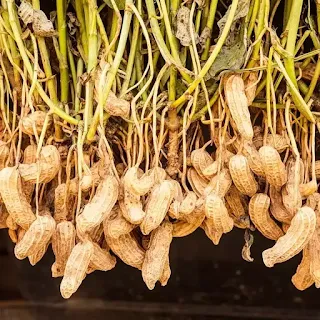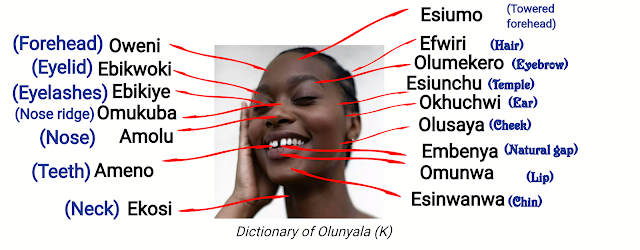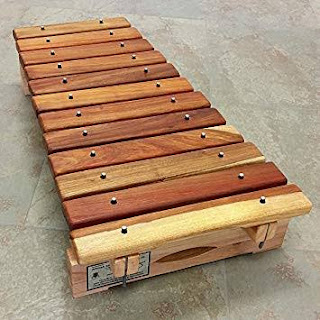ABANYALA BA KAKAMEGA: Madicinal Plants Part 1 of 12
Abanyala ba Kakamega are rich in cultural knowledge on herbal medicine and herbal food that have been use for ages. The herbal medicine is categorised into broad categories. Of all the concoctions, there is one that is commonly known by many in Bunyala and beyond: it is called amanyasi.
However, besides amanyasi we have broad categories of other concoctions such as amakhamusia (vapour used), amakhuuma, amabichibichi, amanyukie, amanchu, amaasuswa, amaombo, amakhomba, amahomoli, amalesi, amahakukha, amatumuulo and amahoso just to mention a few.
This part 1 of 12 deals with amakhuuma (immunity booster) and omubichibichi (sexual boosters).
A) AMAKHUUMA.
Amakhuuma is a concoction made by mixing roots, bark, leaves, fruits and flowers from Zanthoxylum chalybeum locally known as esikhumwa. The tree is called esikhuumwa while the concoction is called amakhuuma. It is boiled, made into thick paste, dried and turned into powder. This is then mixed in groundnut paste (omunyobo) or simsim paste (omutekete) and used as key ingredients in cooking vegetable.
Apart from it being used to enrich the medicinal value of vegetable, the various parts of the tree are used to make medicine for treating various ailments.
B) AMABICHIBICHI
Amabichibichi is a concoction the was used to exite sexual feeling among those who have sexual dysfunctional issues. It was made from a mixture of various trees which were mixed in groundnuts paste (omunyobo) or simsim paste (omutekete). Boys who suffer from sexual dysfunction among the Abanyala are suffering it out of fear to share their problem with the elderly who know the cure. The following are some of the trees used to make amabichibichi. The type and degree of sexual dysfunction dictated the choice of the herbs to be put into use.
However, besides amanyasi we have broad categories of other concoctions such as amakhamusia (vapour used), amakhuuma, amabichibichi, amanyukie, amanchu, amaasuswa, amaombo, amakhomba, amahomoli, amalesi, amahakukha, amatumuulo and amahoso just to mention a few.
This part 1 of 12 deals with amakhuuma (immunity booster) and omubichibichi (sexual boosters).
A) AMAKHUUMA.
Amakhuuma is a concoction made by mixing roots, bark, leaves, fruits and flowers from Zanthoxylum chalybeum locally known as esikhumwa. The tree is called esikhuumwa while the concoction is called amakhuuma. It is boiled, made into thick paste, dried and turned into powder. This is then mixed in groundnut paste (omunyobo) or simsim paste (omutekete) and used as key ingredients in cooking vegetable.
 |
| Esikhuumwa |
- Root bark- The root concoction is used for managing sickle cell disease (olwondera), treating fever (embewo), malaria (okuyaka), worms (enjukha munda), general body pains and weakness (amatekhere), elephantiasis, headache (omukhomako), toothache (ameno), diabetic symptoms, sexual impotence (owuchiri), gonorrhea (oluwusi), after delivery pain (etakirisi) and menstral abdominal pain (esalire chya olukumu), vomiting (okhulusa) and swollen lymph node (esambafu). The dried root powder can be added to porridge to treat asthma. A paste from the root bark is applied to swellings, hernia and rheumatism,
- Leaves- Crushed leaves conconcotion is drunk to treat convulsions, oedema, measles, swollen legs and psychiatric problems. The crushed leaves are also applied to treat dog, snake, spider and scorpion bites.
- Stem bark- the stem bark is useful when chewed to treat toothache, stomach ulcers, sickle cell disease, tuberculosis (okuhere), skin diseases such as ringworms (ebikhombamosi) and owusumwa, body tumours, measles, diarrhea (okhunyalala), intestinal worms (anakhenie), bilharzia, amoebas and colic. The smoke from burning stem bark can be inheled stop olumbuchu- fainting, dizziness and headache.
- The fruits are chewed for treatment of fever, sore throat, severe colds, tonsilitis, pneumonia and chest pain (okuhechero). Honey harvested from bees dwelling in a place with this type of trees is very good for treating coughs (esokhololo) when taken unboiled.
B) AMABICHIBICHI
Amabichibichi is a concoction the was used to exite sexual feeling among those who have sexual dysfunctional issues. It was made from a mixture of various trees which were mixed in groundnuts paste (omunyobo) or simsim paste (omutekete). Boys who suffer from sexual dysfunction among the Abanyala are suffering it out of fear to share their problem with the elderly who know the cure. The following are some of the trees used to make amabichibichi. The type and degree of sexual dysfunction dictated the choice of the herbs to be put into use.
Extreme potent herbs have been removed for health security reasons.
1. Omukombera- The roots of Mondia whitei are used. Omukombera is a word formed from the verb okhwikomba which means to crave for something. The root causes craving for food and sex. The leaves are also used as vegetable. There are many other uses of omukombera that have been overshadowed by this use. It treats more than 26 ailments in human being.
 |
| Omukombera |
2. Amaito- roasted goundnut seeds. These are made into paste called omunyobo to form the key ingredient for mixing in the other herbs.
 |
| Amaito |
3. Omusangula- The root rhus vulgaris is used. Only a few people understood the symbolism behind the song 'lukaka lwatinya..... musangula....'
 |
| Omusangula |
4. Omubinubinu- The root and leaves of Senna didymobotrya are used. The leaves can also be used to make ash called omwimbi which is mixed in milk to make amabere ka omwimbi.
 |
| Omubinubinu |
5. Olunani luporo- the African cherry orange or the lemonia mirabilis root was greatly used. The plant has many other medicinal value besides sexual enhancement. It treats more than 15 human ailments.
6. Epilipili- the fruits were swallowed or used in the cooking. At times the leaves are used as vegetable.
 |
| Epilipili |
7. Opwokopwoko- Bulbine natalensis and Chlorophytum borivilianum. The bulb of Bulbine natalensis for importancy.
8. Omutombwe- the rhizome of Acorus calamus is used.
 |
| Omutombwe |
9. Omukhindu- the roots and leaves are used.
 |
| Omukhindu |
10. Olulikiliki- the rools, stem and leavers of Hypanthus anneaspermus are used. The name is suggestive of its effect.
 |
| Olulikiliki |
11. Cassia ositentalis- the roots and leaves of cassia ositentalis are used.
12. Esaka- Though used as vegetable, the roots are also used.
 |
| Esaka |






Very educative
ReplyDelete